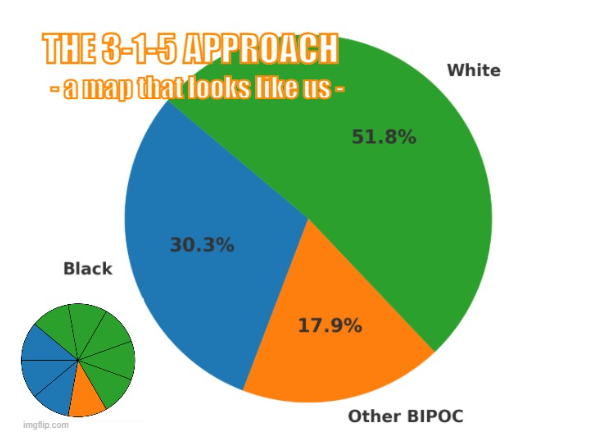Why Is Baltimore County Redistricting Now, Why Should We Care, and How Do We Get Fair Maps?

It’s time for Baltimore County voters to have a fair chance at electing candidates of their choice — not the other way around. For too long, elected officials have cherry-picked their voters through district maps that fail to reflect the county’s true diversity.
Now, a rare mid-cycle redistricting is underway. The new map can impact hundreds of elected and appointed officials until after the 2030 Census — not just the County Council but also the County's many boards and commissions.
The Push for Fair Maps
Advocates for fair maps are urging the newly formed 2025 Baltimore County Redistricting Commission to draw districts that accurately represent the county’s demographic diversity.
Last November, voters overwhelmingly approved expanding the County Council from seven to nine districts. However, by law, the new map must go through a formal redistricting process with public input. This is our chance to demand fair representation.
Why It Matters
After Baltimore County’s 2021 redistricting map was found to violate the federal Voting Rights Act (VRA), the county spent over $1 million defending the illegal map it proposed. From the final map, despite having qualified Black and female candidates, seven men - six white (86%) and one Black (14%) - were elected.
This time, the Commission must ensure compliance with the VRA from the start.
At a recent meeting, the Commissioners heard from redistricting expert Dr. Kareem Clayton of the Brennan Center for Justice, who emphasized: “Line drawers MAY NOT DILUTE” (Dr. Clayton’s emphasis) the voting strength of protected classes, citing Thornburg v. Gingles.

Population and Representation: The 3-1-5 Approach
Using population percentages is a clear way to measure whether a redistricting map complies with the VRA.
Fair maps advocates argue that Baltimore County’s demographics support a 3-1-5 approach:
- 3 majority-Black districts (33%)
- 1 majority-BIPOC (Black, Indigenous, and People of Color) district (11%)
- 5 majority-white districts (55%)
This configuration would more accurately reflect the county’s population and reduce the risk of VRA violations.

Illustrative Maps Prove It’s Possible
ACLU has presented three proof-of-concept maps that meet legal and practical requirements: they are compact, contiguous, equally populated, and respect community boundaries. These maps demonstrate that a variety of fair and VRA-compliant 3-1-5 configurations are feasible.
Vote Dilution Is a Real Concern
By contrast, the Bill 47-24 and Woodlawn Approach maps proposed include only two majority-Black districts, leaving seven majority-white districts — raising serious concerns of vote dilution and potential VRA violations:
- When 30% of the county is Black but Black residents control only 2 out of 9 seats (22%), their voting strength appears diluted.
- When 48% of the county is BIPOC but holds just 2 out of 9 seats (22%), it further suggests vote dilution.
- That the 52% white population would control 7 out of 9 seats (78%) is a stark imbalance.
Federal Law Takes
As stated by Commission staff, the VRA must guide the Redistricting Commission's process. According to the Baltimore County 2025 Redistricting Manual (pp. 11-12; and Section VI, Federal Voting Rights Act, pp. 19-24):
- Federal law takes precedence over state and local law.
- Under the Supremacy Clause of the U.S. Constitution (Article VI, Clause 2), federal law controls in cases of conflict.
- The VRA of 1965 (52 U.S.C. § 10301) preempts any state or local measures that dilute minority voting power (Allen v. Milligan, 599 U.S. ___ (2023)).
Make Your Voice Heard
Fair maps are only possible if the public demands them. The next public hearing will be virtual on April 16th at 6 p.m. (Details to sign up to testify and attend are here.) This is a chance for community members to share their input and advocate for a map that fully complies with the VRA and reflects the county’s diversity.
Let’s not allow the mistakes of the past to define the next seven years. The time for fair maps is now. A 3-1-5 map is a fair and doable map.
Peta Naylor Richkus, 3/29/2025
